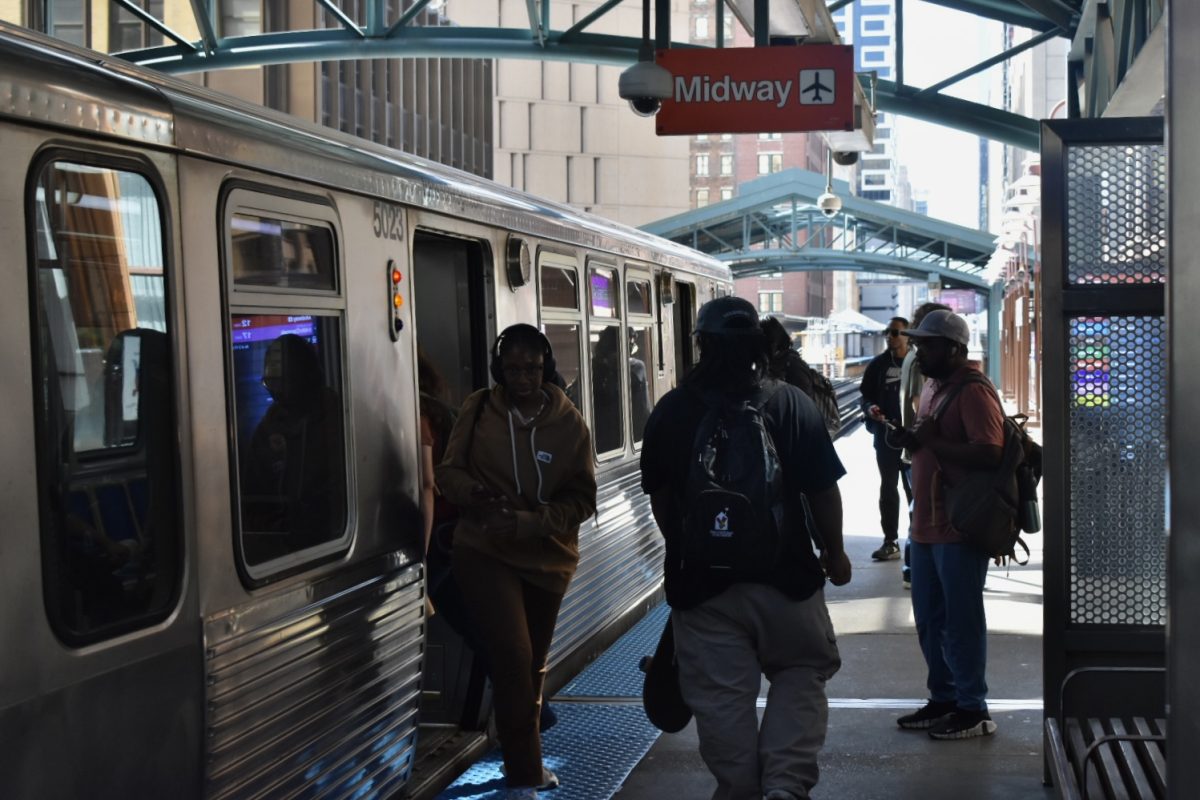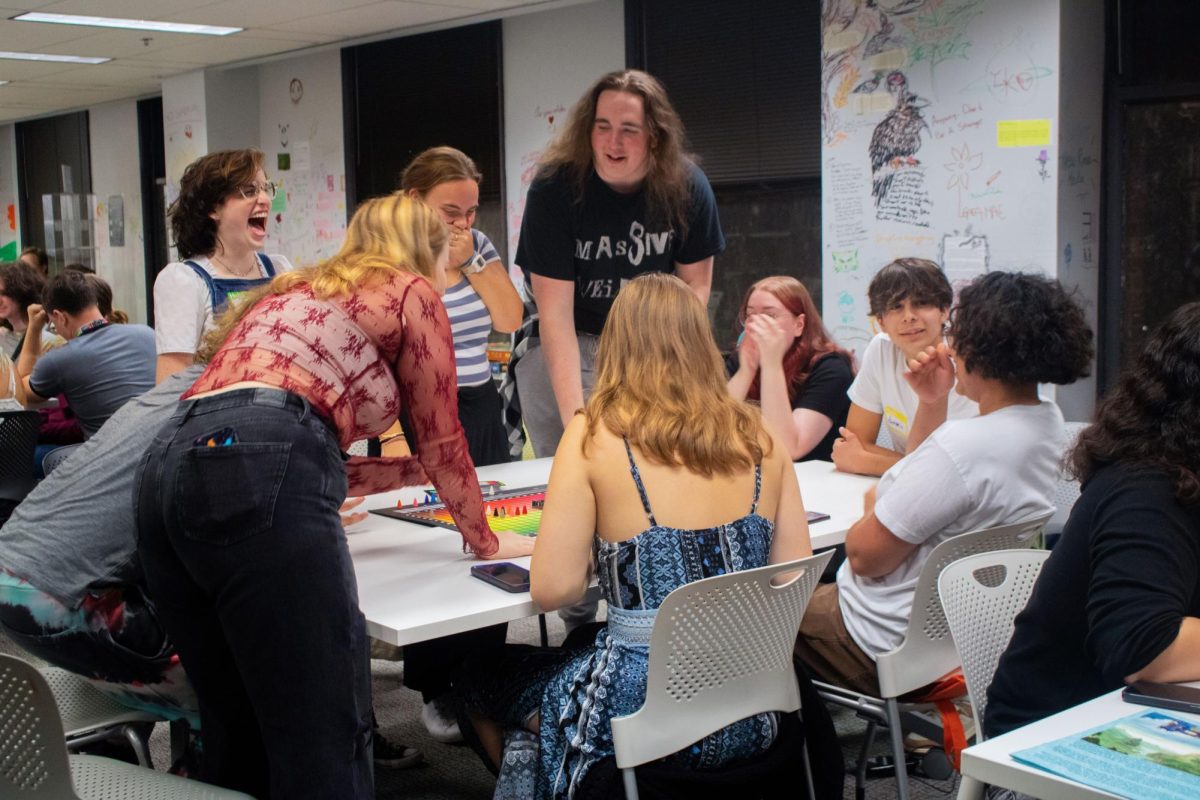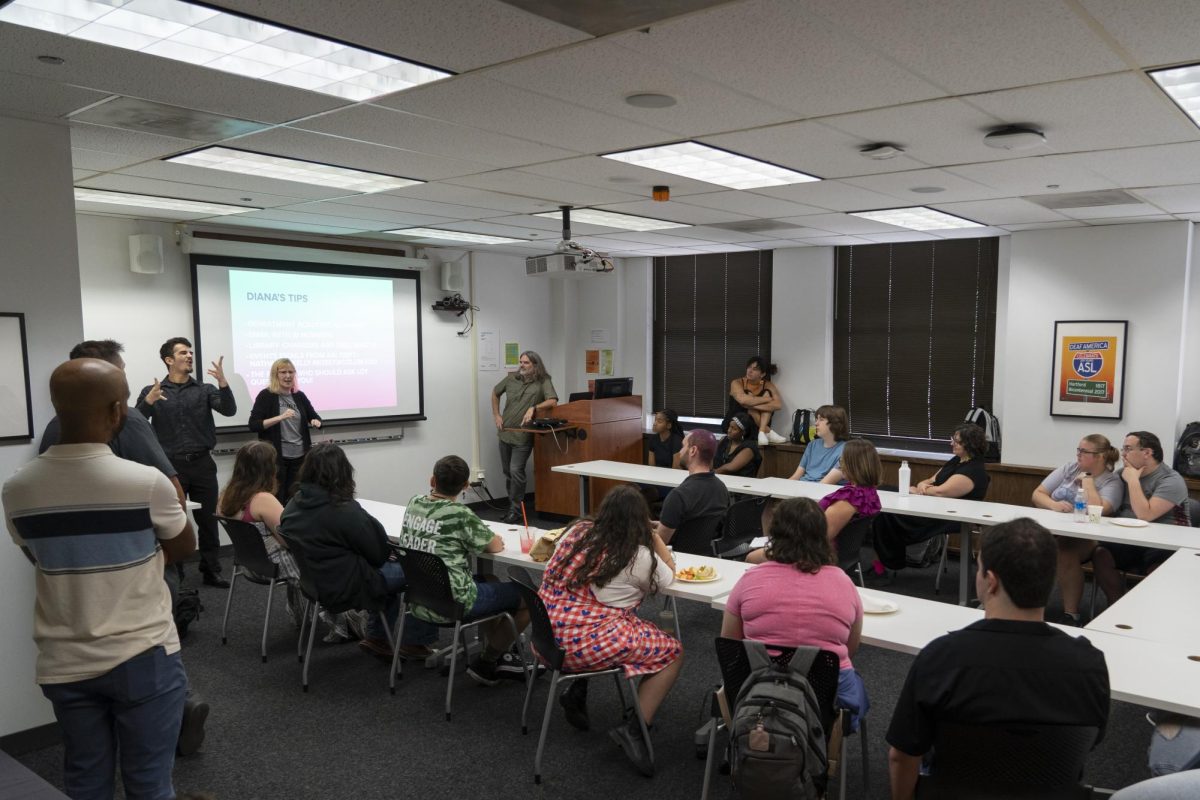First-year fashion studies major Winter Williams wakes up at 5 a.m. to get ready for the day and start her commute to Columbia. First, she walks 20 minutes from home in the West Pullman neighborhood to the bus stop, then transfers to the CTA Red Line train and another few minutes of walking to get to school around 9 a.m.
This is the average daily commute for around half of the student population.
A survey from the spring 2023 semester showed that 53% of students identified as commuter students, meaning they do not live on campus and travel at least 15 minutes from home to get to class. The average commute ranges from 30 to 50 minutes with some students traveling one to two hours to get to class.
The survey also shows that commuter students are more likely to be students of color, from the Chicagoland area or transfer students.
For many students, including Williams, commuting was a financial decision. Williams said that commuting was not her first choice, and that it was “a battle” with her parents about living on campus.
“They felt that I wasn’t ready to leave just yet,” she said. “And then it was also because we thought the cost of living was included in the tuition.”
The cost of housing at Columbia ranges from the lowest priced option, a small double shared room in a shared apartment for $5,926, to the most expensive, a studio apartment for $18,606.
After covering her academic financial needs, Williams said the conversation about housing ended with her living at home for another year with plans to save up for her own place.
“It’s good to have that small slice of freedom and independence from home, but overall it’s not always the best experience.”
She takes safety precautions commuting through the city, including dressing in clothes that are less revealing and trying to be home before sunset. Although Williams is excited to be at an art school to be able to express herself, she said that “nine times out of ten, I can’t wear what I really want.” She described how she would rather wear “something safe” than risk being harassed on public transportation.
Williams said she is nervous about experiencing the commute during the winter months and hopes to find a friend who takes the same train line as her so she can feel safer getting home after school.
The Student Diversity and Inclusion at Columbia is hosting a commuter student meet and greet event on Thursday, Sept. 12, at 618 S. Michigan Ave. The event invites students to explore campus, meet fellow commuters and play games while enjoying free food and drinks.
Jenna Davis, the president of the Student Government Association, recently moved off campus and commutes 45 minutes to school. She said that she meets many commuter students who are heavily involved in on-campus events. SGA announced first-year animation major Roland Cooper as the new commuter senator.
“This year, we are really trying to build community among Columbia because of last year, that’s really needed. Commuter students are people that we are always thinking about in everything we do,” Davis said.
She said there are multiple ways that SGA is trying to cater to commuter students like making events earlier in the day and holding virtual meetings on Zoom. Davis said that students who commute to school and want to be more involved should check the Engage app for events happening in between classes.
Graysen Peterson, a first-year fine arts major who commutes from the Back of the Yards, is part of three student organizations on campus. They noted how their hour commute does not affect their involvement on-campus because they have rides available for days they have to stay late, unlike those who entirely rely on public transportation.
Ian Shalton, a first-year film major, also experiences little to no impact on his college life due to commuting. Shalton commutes around 40 minutes from the North Side of Chicago to get to campus.
“Making the commute isn’t too bad, especially because I’m not too far,” Shalton said.
Although Shalton does have a shorter commute than others, he is still not involved in any groups or organizations on campus. He said the biggest conflict is group meetings taking place during his class.
Shalton likes being a commuter student because it gives him an excuse to visit the downtown area. He said that there are more things to do downtown and it allows him to “meet a diverse group of people,” compared to where he lives in the North Side.
Williams grew up in several places in the Chicagoland area and values going to a college that is downtown and exposes her to creativity in different forms. The chance to explore the city art of murals and graffiti while in school made Williams gain new admiration for the creative minds in Chicago, she said.
“When you’re growing up in a city, you don’t really think about all the special stuff they have to offer,” Williams said.
Soleil Zamora, a senior photography major, commutes an hour and a half to school and said that learning from creative instructors with lived experience makes up for the time she spends commuting to class.
Zamora, who is on campus for six days a week and has a job on campus, said that she gets “more valuable information” from instructors who share their experiences in the photography field. Zamora chose to commute due to financial reasons.
Williams’ commute also made her compromise her academic schedule this semester. She contacted her academic advisor before the school year to request classes that fall between 8 a.m. and 7 p.m. This semester, her schedule includes back-to-back classes from Tuesday through Thursday with her earliest class starting at 8:30 a.m. and her latest class ending at 6:20 p.m.
Like Williams, Zamora said that being a commuter student impacts her schedule and her ability to engage in official clubs, but she still has a strong connection to the school. Her classes give her an opportunity to meet peers and create community while living off-campus. She said she wants people to “understand the struggles we go through” as commuter students.
“I’ve never been to a Columbia or college party,” she said. “I don’t have the luxury to spend money like that. I’m always cautious of what I’m spending. I’m always bringing my own lunch and making sure I have enough money on my CTA card to take the bus and train here.”
Zamora, who lives with her parents near Midway airport, said that they are her main motivator in pursuing higher education and their support makes commuting to school worthwhile.
“I’m also trying to get an education. I’m trying to do better than my parents could do because all they ever wanted is for their children to do better than they do.”
Copy edited by Angel Marie Guevara










